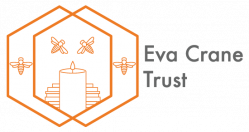Assessing the decline of wild honey production in Philippines, Denise Margaret Matias
Assessing the decline of wild honey production in Philippines, Denise Margaret Matias
Denise Margaret Matias
Researcher
ZEF - Center for Development Research
Bonn, Germany
Financial support was sought from The Eva Crane Trust to fund the participatory resource mapping of Apis dorsata (giant honey bees) nesting trees. This would be carried out by indigenous Tagbanua honey hunter and gatherers in the village of Sagpangan in the province of Aborlan in the UNESCO Man and Biosphere Reserve Palawan in the Philippines. Planned as a participatory project, the indigenous honey hunter and gatherers were consulted and integrated into data gathering and were trained on the use of equipment such as GPS and digital cameras.

The aims of this project are:
(1) Map the extent of Apis dorsata distribution
(2) Document the nesting tree species of Apis dorsata
(3) Create and publish a database of Apis dorsata nesting tree species in Sagpangan, Aborlan, Philippines
These are planned to be carried out through the following methods:
(1) GPS mapping and tracking – the indigenous honey hunter and gatherers will be getting the coordinates of the trees where they gather honey combs. GPS tracking will also be enabled in order to do a heat map of the movement of the indigenous honey hunter and gatherers inside the forest area.
(2) Sampling leaves and photo documentation of nesting tree– the indigenous honey hunter and gatherers will also be asked to collect samples of leaves and document locations of nesting tree species of bee hives.
(3) Taxonomic identification alongside local identification of nesting tree species – information on the leaf samples will be sent to a taxonomist for verification.
The project is necessary in making the case for:

(1) Conservation of the Tagbanua community forest – honey is currently the highest paying non-timber forest product in the indigenous community forest and economic sustainability of honey hunting and gathering is contingent on the environmental sustainability of the community forest. Documenting the nesting tree species and mapping the extent of the Apis dorsata distribution will allow for scrutiny of both micro (individual trees) and macro (forest area) aspects of wild honey gathering and emphasis on how taking care of both is important in sustaining one of the community’s important livelihood sources.
(2) Value addition to honey – the local non-government organization (NGO) assisting the wild honey hunter and gatherers in marketing their products would like to use information on the nesting tree species and the Apis dorsata distribution in the forest in creating a story around the honey product.
Thanks to the support of the Eva Crane Trust, 30 participants, consisting of Apis dorsata hunter-gatherers and female community members have been formally trained in the use of Garmin GPS eTrex 20 equipment and Nikon Coolpix S32 cameras. This project is on-going as the results of the participant’s findings are now being assessed.
